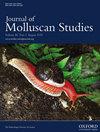休达(直布罗陀海峡)濒危瓣鳃纲贝类(Patella ferruginea)的繁殖和繁殖期
IF 1.2
4区 生物学
Q2 MARINE & FRESHWATER BIOLOGY
引用次数: 0
摘要
铁线蕨(Patella ferruginea)是地中海西部特有的一种海洋软体动物,由于历史上的过度开发、栖息地的丧失和栖息地的脆弱性而面临严重威胁。该物种在阿尔博兰海港口的防护堤上形成繁殖种群,给管理带来了持续挑战。研究人工栖息地的繁殖率和偏好以及早期生命阶段对其保护至关重要。我们进行了三项实验,其中两项专门在直布罗陀海峡的休达港进行,重点是 25 毫米以下的新鱼。第一项研究利用固定四分格,探索了三个不同海拔(向上、向下)和倾斜度(水平、垂直)地点的年内新苗变化。分别于 2017 年 3 月、4 月、5 月、7 月、10 月和 12 月对四分格(20 × 20 厘米)进行了新陈代谢调查。第二项实验采用了类似的因素,时间跨度为 2017-2019 年,研究了 3 月、5 月和 7 月的招募变化。第三项实验通过比较休达和梅利利亚种群,研究了同种贝壳繁殖现象(phoresy phenomenon)。结果显示,中下沿岸带的招募率较高,招募的个体较小,招募后会向上迁移。在磷化的坡度或地点方面没有出现明显的差异。这项研究强调了铁线蕨(P. ferruginea)招募数据作为海港健康指标的潜力,同时承认了外部因素对招募成功率的影响。对招募模式的长期监测,以及其他生态指标,对港口环境中铁豚的可持续管理至关重要。本文章由计算机程序翻译,如有差异,请以英文原文为准。
Recruitment and phoresy of the endangered limpet Patella ferruginea in Ceuta (Strait of Gibraltar)
Patella ferruginea, an endemic marine mollusc of the western Mediterranean, faces a severe threat due to historical overexploitation, habitat loss and habitat vulnerability. This specie forms reproductive populations on sheltered dikes within Alboran Sea ports, presenting a persistent management challenge. Investigating both recruitment rates and preferences in artificial habitats, as well as early life stages, is crucial for its conservation. Three experiments, focusing on recruits under 25 mm, were conducted, with two exclusively in Ceuta's port in the Strait of Gibraltar. The first study explored intra-annual recruitment variations across three sites with different elevations (up, down) and inclinations (horizontal, vertical), utilizing fixed quadrats. Quadrats (20 × 20 cm) were surveyed for recruitment in March, April, May, July, October and December 2017. The second experiment, with similar factors, spanned 2017–2019, studying recruitment variations in March, May and July. The third examined the phoresy phenomenon—recruitment over conspecific shells—by comparing Ceuta and Melilla populations. Results revealed higher recruitment rates and smaller recruits in the lower midlittoral zone, followed by postrecruitment migration upwards. No discernible differences emerged regarding the slope or location for phoresy. This study highlights the potential of P. ferruginea recruitment data as an indicator of harbour health, acknowledging the influence of external factors on recruitment success. Long-term monitoring of recruitment patterns, alongside other ecological indicators, is crucial for informing sustainable management of P. ferruginea in port environments.
求助全文
通过发布文献求助,成功后即可免费获取论文全文。
去求助
来源期刊

Journal of Molluscan Studies
生物-动物学
CiteScore
3.00
自引率
8.30%
发文量
36
审稿时长
3 months
期刊介绍:
The Journal of Molluscan Studies accepts papers on all aspects of the study of molluscs. These include systematics, molecular genetics, palaeontology, ecology, evolution, and physiology. Where the topic is in a specialized field (e.g. parasitology, neurobiology, biochemistry, molecular biology), submissions will still be accepted as long as the mollusc is the principal focus of the study, and not incidental or simply a convenient experimental animal. Papers with a focus on fisheries biology, aquaculture, and control of molluscan pests will be accepted only if they include significant advances in molluscan biology. While systematic papers are encouraged, descriptions of single new taxa will only be considered if they include some ‘added value’, for example in the form of new information on anatomy or distribution, or if they are presented in the context of a systematic revision or phylogenetic analysis of the group.
 求助内容:
求助内容: 应助结果提醒方式:
应助结果提醒方式:


